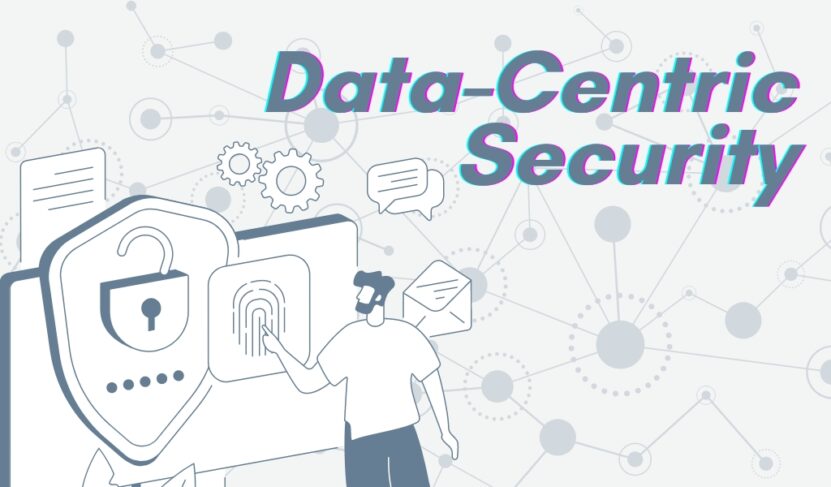In today’s digital era, data is the lifeblood of organizations. With an ever-increasing volume of sensitive data being created, stored, and transmitted, the need for effective security measures has never been more critical. Traditional security approaches have focused on protecting network perimeters and infrastructure, but as cybercriminals continue to evolve their tactics, a more robust solution is needed. Enter data-centric security.
In this comprehensive and engaging guide, we will explore the concept of data-centric security, delving into its importance, the challenges it seeks to address, and the strategies that can help protect your valuable data assets. Whether you’re a seasoned security professional or a curious individual, this article will provide valuable insights into the world of data-centric security.
Understanding This Type of Security
Data-centric security is an approach that prioritizes the protection of data itself rather than merely securing the systems and infrastructure that store and process it. By focusing on safeguarding the data, this approach aims to reduce the risk of unauthorized access, misuse, or theft, regardless of where the data is stored or how it is transmitted.
Traditional security measures, such as firewalls, intrusion detection systems, and antivirus software, are still essential. However, they primarily safeguard the perimeter and infrastructure, potentially leaving the data vulnerable. Data-centric security adds an extra layer of protection, ensuring that the data remains secure even if the infrastructure is compromised.
The Importance of Data-Centric Security:

The Rise of Cyberthreats
The frequency and sophistication of cyberattacks are continually growing, with ransomware, phishing, and insider threats becoming more prevalent. A data breach can have devastating consequences, including financial losses, reputational damage, and loss of customer trust. By adopting a data-centric security approach, organizations can significantly mitigate the risk of data breaches and protect their sensitive information.
Regulatory Compliance
Numerous data protection regulations, such as the General Data Protection Regulation (GDPR) and the California Consumer Privacy Act (CCPA), have been enacted to ensure that organizations handle sensitive data responsibly. Data-centric security helps organizations comply with these regulations by implementing robust security controls that protect personal and sensitive data.
The Advent of Cloud and Remote Work

The widespread adoption of cloud services and remote work has resulted in data being dispersed across various locations and devices. Data-centric security ensures that the data remains protected no matter where it is stored or accessed, providing organizations with the flexibility to adapt to evolving business needs while maintaining robust security.
By taking a data-centric approach to security, organizations can ensure that all of their sensitive information, from video footage captured by IP cameras to financial records, is protected against a range of cyber threats.
Challenges Addressed by Data-Centric Security

Insider Threats
Insider threats, whether malicious or unintentional, pose a significant risk to organizations. By implementing data-centric security measures such as data classification, encryption, and access controls, organizations can minimize the risk of unauthorized access and data leakage from insiders.
Third-Party Risks
Organizations often share sensitive data with third-party vendors and partners, which can increase the risk of data breaches. Data-centric security measures like encryption and data masking help ensure that sensitive data remains protected, even when shared with external entities.
Data Sprawl
As data is stored and transmitted across multiple platforms and devices, it becomes increasingly challenging to maintain visibility and control. Data-centric security helps organizations address this challenge by implementing security controls at the data level, providing a consistent layer of protection regardless of where the data resides.
Strategies for Implementing Data-Centric Security

Data Classification
Data classification involves categorizing data based on its sensitivity and value to the organization. By identifying and prioritizing sensitive data, organizations can allocate resources and implement appropriate security controls to protect their most valuable assets.
Encryption
Encryption is a critical component of data-centric security, ensuring that data remains unreadable even if it falls into the wrong hands. By encrypting sensitive data, organizations can protect it during storage and transmission, reducing the risk of unauthorized access.
Data Masking
Data masking involves replacing sensitive data with fictitious or scrambled information, rendering it useless to unauthorized users. This technique allows organizations to share data with third parties without exposing sensitive information and can be particularly useful for testing and development purposes.
Access Controls
Implementing robust access controls is crucial to prevent unauthorized access to sensitive data. Organizations should adopt the principle of least privilege, granting users the minimum level of access necessary to perform their job functions. Additionally, access controls should be regularly reviewed and updated to account for employee role changes and terminations.
Monitoring and Auditing

Continuous monitoring and auditing of data access and usage are essential for identifying and addressing potential security risks. By tracking data access and implementing real-time alerts, organizations can quickly detect and respond to suspicious activity, minimizing the potential impact of a data breach.
Data Loss Prevention (DLP) Solutions
DLP solutions help organizations prevent data leakage by identifying and blocking the unauthorized transfer of sensitive information. These solutions can be deployed across various channels, including email, web applications, and cloud services, to ensure comprehensive protection.
Employee Training and Awareness
No security strategy can be entirely effective without well-informed and vigilant employees. Organizations should invest in regular security training and awareness programs, ensuring that employees understand their role in protecting sensitive data and are familiar with best practices and organizational policies.
The Future of Data-Centric Security

As technology continues to evolve and the volume of data generated and stored increases, the need for data-centric security will only grow. Emerging technologies, such as artificial intelligence (AI) and machine learning, are likely to play a significant role in shaping the future of data-centric security. These technologies can be leveraged to identify unusual patterns of data access, automate the classification of data, and improve the effectiveness of existing security controls.
Final Words
In today’s digital landscape, data is an organization’s most valuable asset. As cyber threats become more sophisticated and the volume of sensitive data grows, it’s crucial for organizations to adopt a data-centric security approach.
By focusing on safeguarding the data itself, organizations can better protect their sensitive information and reduce the risk of data breaches, ensuring compliance with data protection regulations and maintaining customer trust.
The strategies outlined in this article provide a solid foundation for implementing data-centric security, enabling organizations to stay one step ahead in the ongoing battle against cybercrime.

